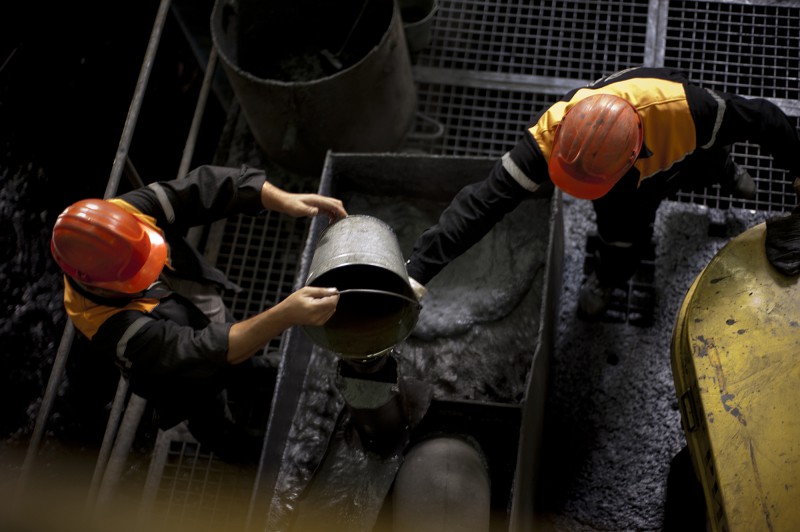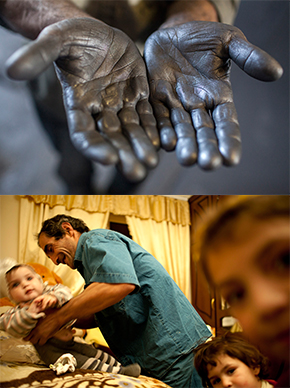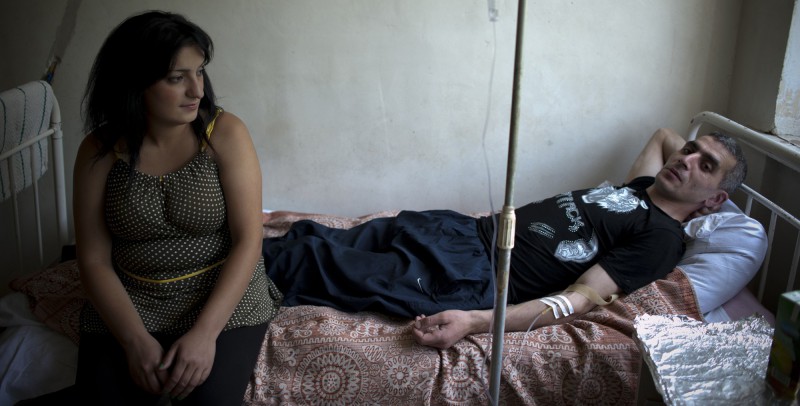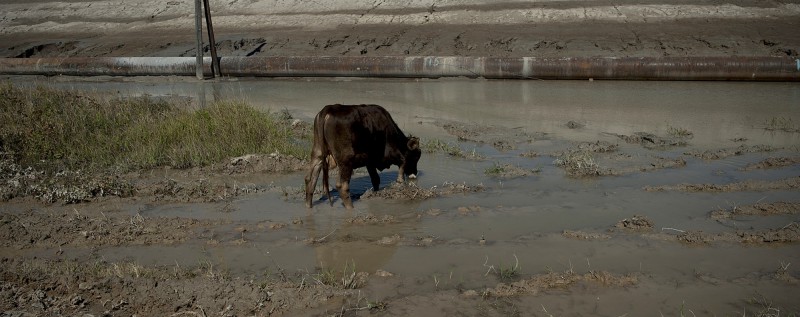YEREVAN–Mining contributed to economic growth in Armenia between 2004-2010 while simultaneously creating income inequality and poverty. This is according to a recent study by the AUA Acopian Center for the Environment conducted in cooperation with the AUA College of Business and Economics.

Mine workers at the Zangezur Copper-Molybdenum processing plant in Kajaran handling toxic heavy metals without breathing protection or protective gloves. Photo by Nazik Armenakyan

The hands of a mine worker at the molybdenum processing center at the Zangezur Copper-Molybdenum Plant in Kajaran. Photo by Anahit Hayrapetyan. That same man change his baby’s diaper later in the day. Photo by Nazik Armenakyan
The study’s principal researcher and author, Dr. Aleksandr Grigoryan, looks at regional-level data and reports that mining does have some positive impact on the growth of the economy.
“This supports the claim often repeated by proponents of mining that it is needed for Armenia’s economic growth,” says Dr. Grigoryan, an assistant professor of economics at AUA.
Mining and Income Inequality
Dr. Grigoryan’s analysis, however, also shows that mining contributes to higher poverty and greater income inequality. “Our analysis shows that the mining sector is likely to increase income inequality and deepen poverty in the regions of Armenia in which it operates,” states Grigoryan.
This runs counter to claims by mining proponents that the sector creates jobs that will have medium- to long-term development impact on the regions and the country.
These conflicting realities can be explained by a number of factors prevalent in Armenia’s economy, according to Grigoryan.
“Mining has been growing as a share of the Armenian economy for several years now but with the economic crisis and increase in world metal prices, mining took on a more significant role in our GDP growth,” he explains, noting that this trend is expected to continue if no other sector of the economy picks up steam.
Mining and Poverty
An increase in poverty is another observed effect of mining, a relationship that Dr. Grigoryan says needs to be studied further.
Other research on the impact of mining conducted by the AUA School of Public Health and AUA Acopian Center reports some residents claiming that property owners are forced to sell their properties at very low prices. Such occurrences, if they have taken place, would deprive villagers of an asset critical to wealth creation, according to Dr. Grigoryan.
Moreover, workers in the mining or mineral processing industries are not provided health insurance, a fact that may burden families with health costs or lower productivity.

A young man in a hospital bed with his wife. He has a stomach ulcer and believes it’s from working at the mine. Photo by Nazik Armenakyan.
The Role of Policy
“If we are to make mining a key sector in the Armenian economy, we also have to develop the right socio-economic policies where the immediate communities and the country benefits maximally,” says Alen Amirkhanian, director of the AUA Acopian Center.
Mining and extractive industries have played a significant role in ensuring long-term and equitable growth for several countries, particularly Norway, Australia, and Botswana. “These countries have successfully used mining to raise the standard of living for a vast majority of their populations because they devised and implemented good public policy,” stresses Amirkhanian, who organized an international conference last November on the topic.
Without proper policies designed to regulate and leverage mining, Armenia will continue on a path that follows mining models that enrich a few while depriving larger numbers of current and future generations of opportunities to benefit from their patrimony, states Amirkhanian.
According to the Armenian Statistical Service, in 2011, Armenia’s mining industry employed 15,500 workers or about 1% of the country’s total employment and contributed to about 3% of the its GDP.
AUA is organizing another international scientific conference on “Emerging Issues in Environmental and Occupational Health.” The conference, set for April 22-23, will bring leading experts from around the world to Yerevan to explore the impact of mining and construction in transition economies such as Armenia. The research they present will provide solutions to the occupational and environmental health problems facing workers, communities and children and help craft public policy to address these issues.

The photos included are from the “Investigative Photojournalism for Human Rights and Clear Environment” project, made possible through the assistance of the Open Society Foundations- Armenia. The project was implemented by Socioscope NGO.
